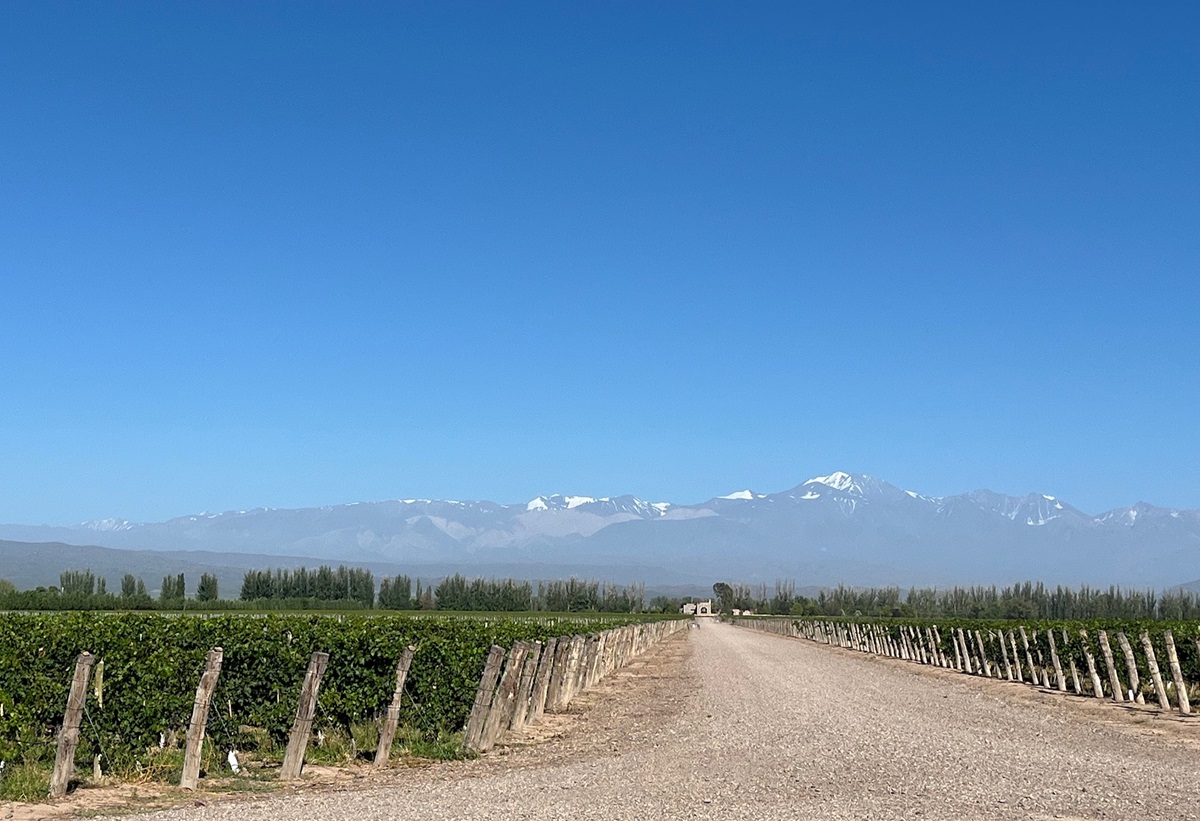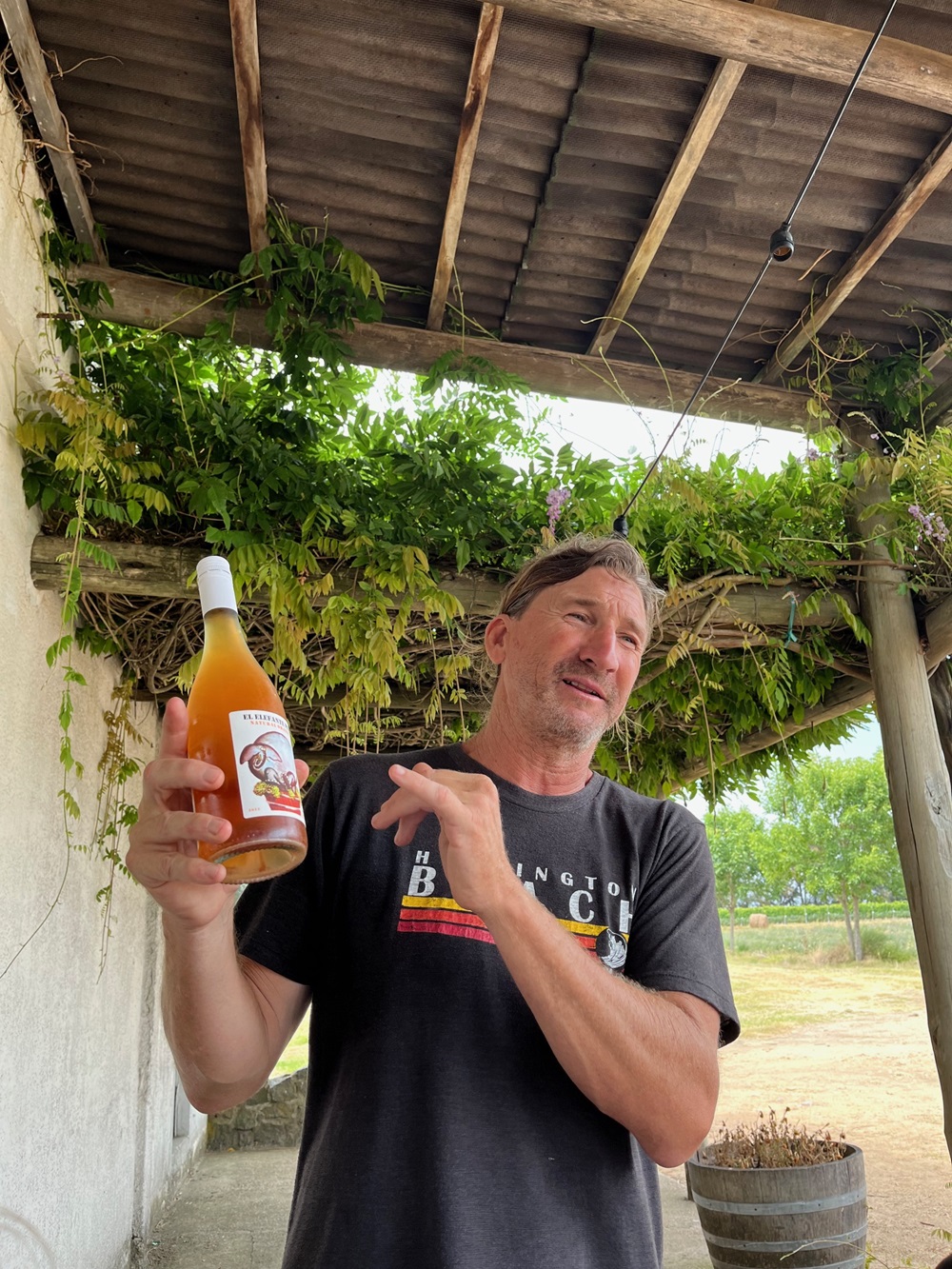CHILEAN CARMENERE

By Rose Murray Brown MW Published in The Scotsman 16 March 2024
Heatwaves and bushfires were very much on the agenda when I visited Chile last month as winemakers prepared for their 2024 harvest in blistering heat and drought, with a plume of smoke from the devastating fires lingering over coastal hills.
Heat and drought are the greatest challenges in the wine world, but in Chile there is one grape which thrives in these conditions. This grape, Carmenere, is now considered Chile’s flagship variety. It is a late-ripener, needing warm sun to ripen and develop its extraordinarily peppery, spicy and savoury flavours and seems to tolerate dry conditions (pictured above are Errazuriz vineyards in Aconcagua Valley).
Bizarrely Carmenere has been planted in Chile since 1850, with cuttings transported from south-west France before phylloxera hit, but no-one knew what it was there. Only since mid-1990s have Chilean winemakers discovered there had been a mix-up with Merlot (this was common apparently). Much of what Chileans thought was an unusually late-ripening Merlot vine in their vineyards – was actually Carmenere.
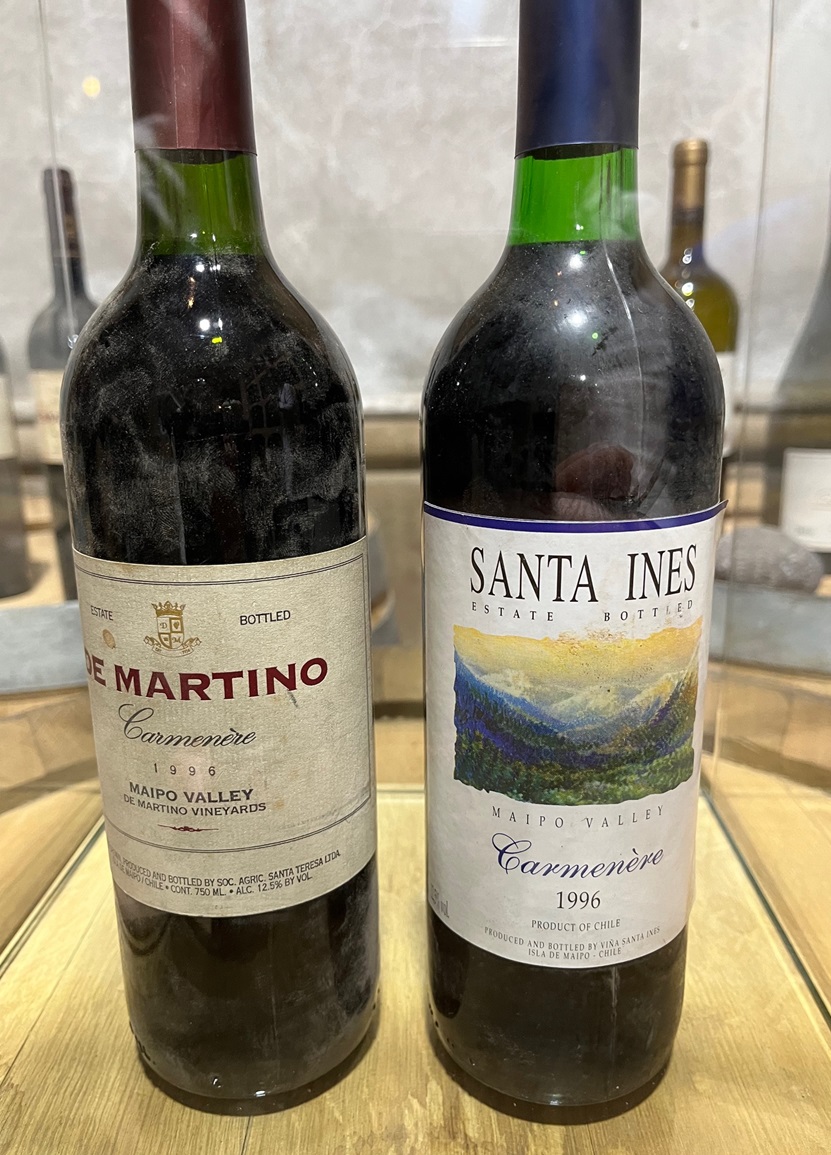
“This is the first Carmenere ever to be exported from Chile”, explained winemaker Nico Perez as we inspected a glass case in pride of place in De Martino’s winery in Maipo (pictured above). The label reads ‘Santa Ines Carmenere 1996’; even then it was not officially allowed to be sold as a varietal.
The mix-up had been discovered two years before in 1994 by keen-eyed French viticulturist Jean-Michel Boursiquot, who noticed that shoot tips and twisted flowers on certain plants was different and lab work confirmed it was Carmenere. This meant that Chilean Merlot made pre-1994 might have been pre-phylloxera Carmenere or a Carmenere/Merlot mix.
Today Carmenere is considered quintessentially Chilean, but it has had a chequered history over the last three decades.
There was a lot of excitement to begin with as winemakers separated out vines and began making the first varietal Carmenere. It is not an easy grape (it barely ripens in Bordeaux) and it has taken a long time for Chileans to understand how to make decent elegant wine from the grape. It works well in blends with Cabernet and Merlot, but making varietal Carmenere has been a challenge.
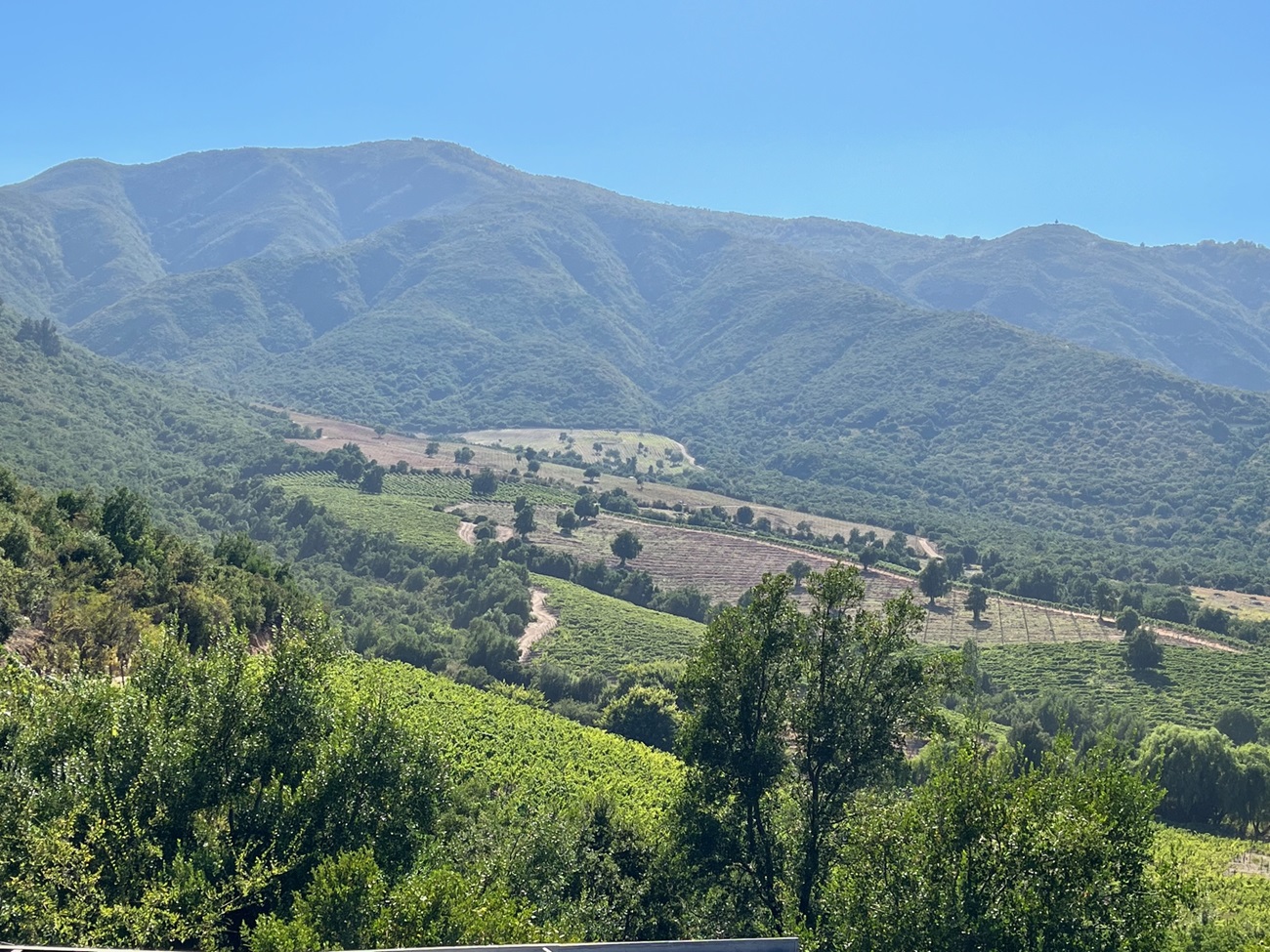
Firstly – it needs the right site with well drained stony clay soils. The best area seems to be Colchagua Valley (Apalta valley in Colchagua pictured above), with Chile’s top Carmeneres from Lapostolle, Casa Silva and Maturana Wines – but there are also good Carmenere hotspots in Peumo in Cachapoal and also in Isla de Maipo where De Martino’s Alta de Piedra vineyard (meaning high stony place) makes a superb example.
Secondly – it needed to be treated differently from Merlot – but it wasn’t. Although Carmenere shares a parent, Cabernet Franc, with Merlot and Cabernet Sauvignon – it is very different in its vineyard characteristics and flavour.
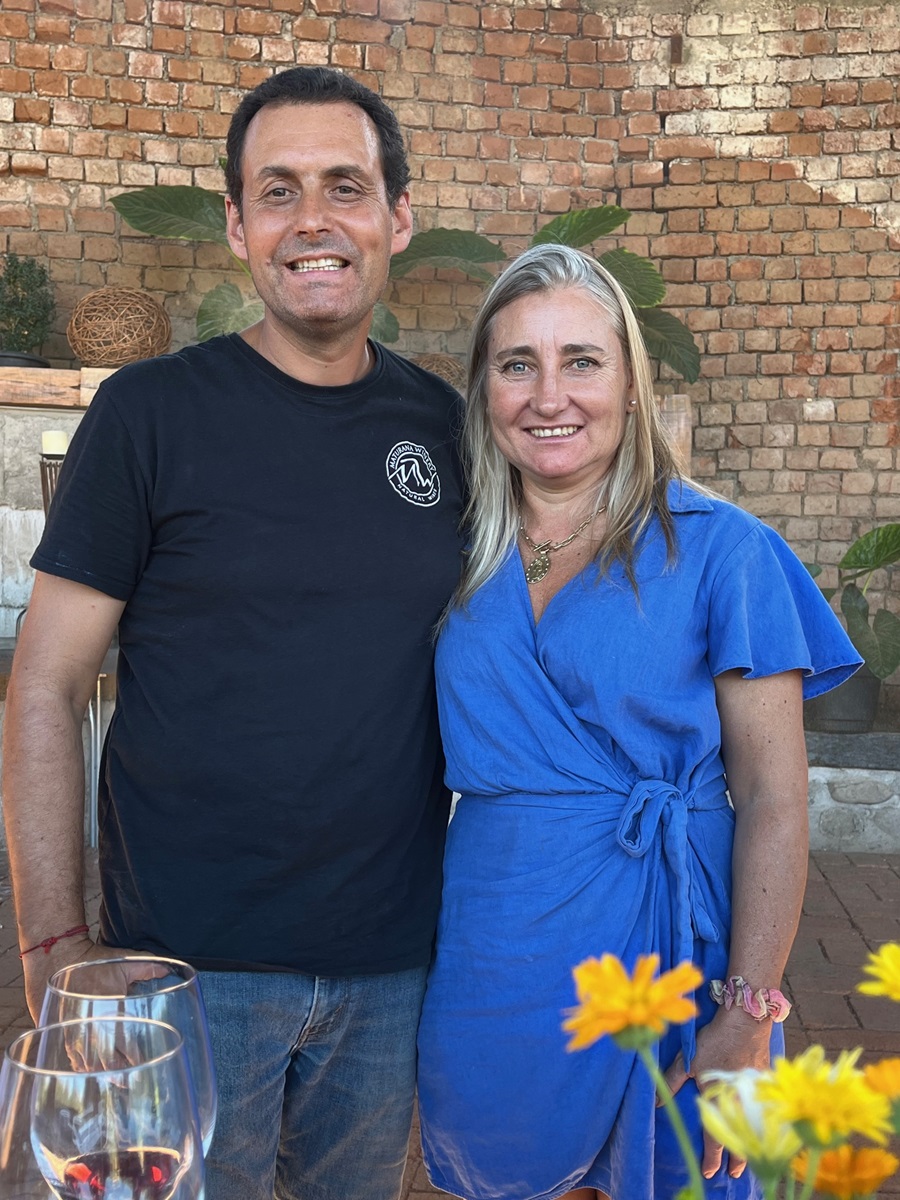
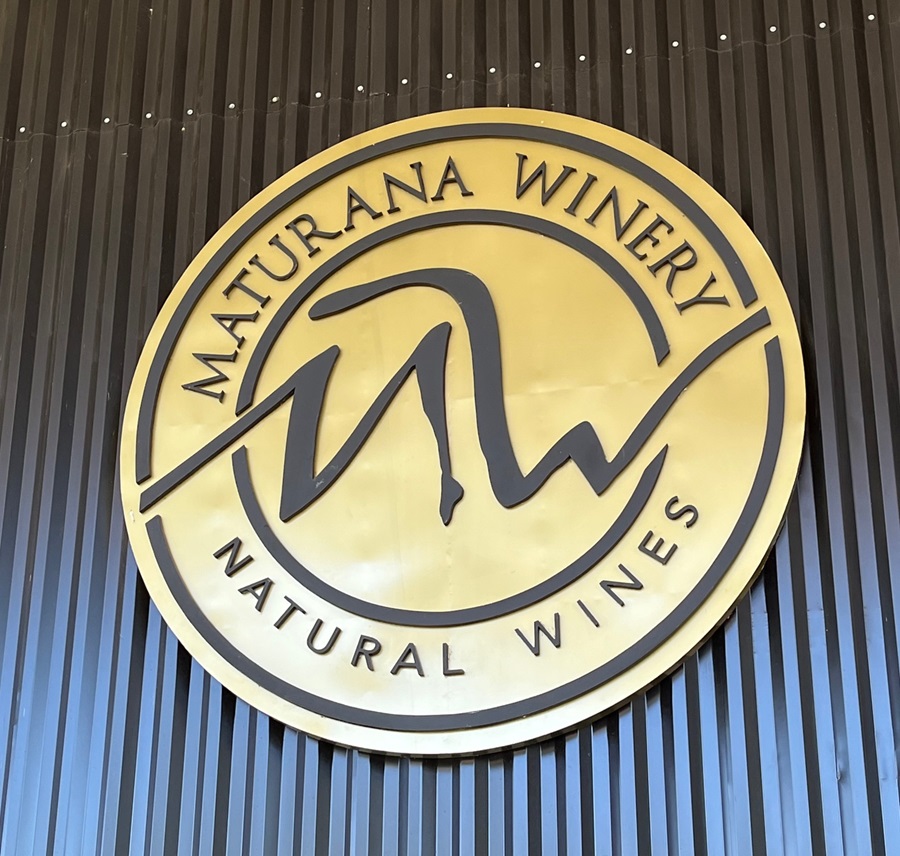
Early Carmenere varietals were not very intense with too many green notes – whilst other wines were far too high in alcohol, jammy and over-ripe. Techniques like green harvesting and leaf thinning are now used to avoid this.
According to Carmenere specialist Jose Ignacio Maturana of Maturana Wines (who was for many years winemaker at Casa Silva before setting up his own winery; Jose Ignacio is pictured above with his wife Gloria): “The key with Carmenere is to pick it at the right time, in its sweet spot”.
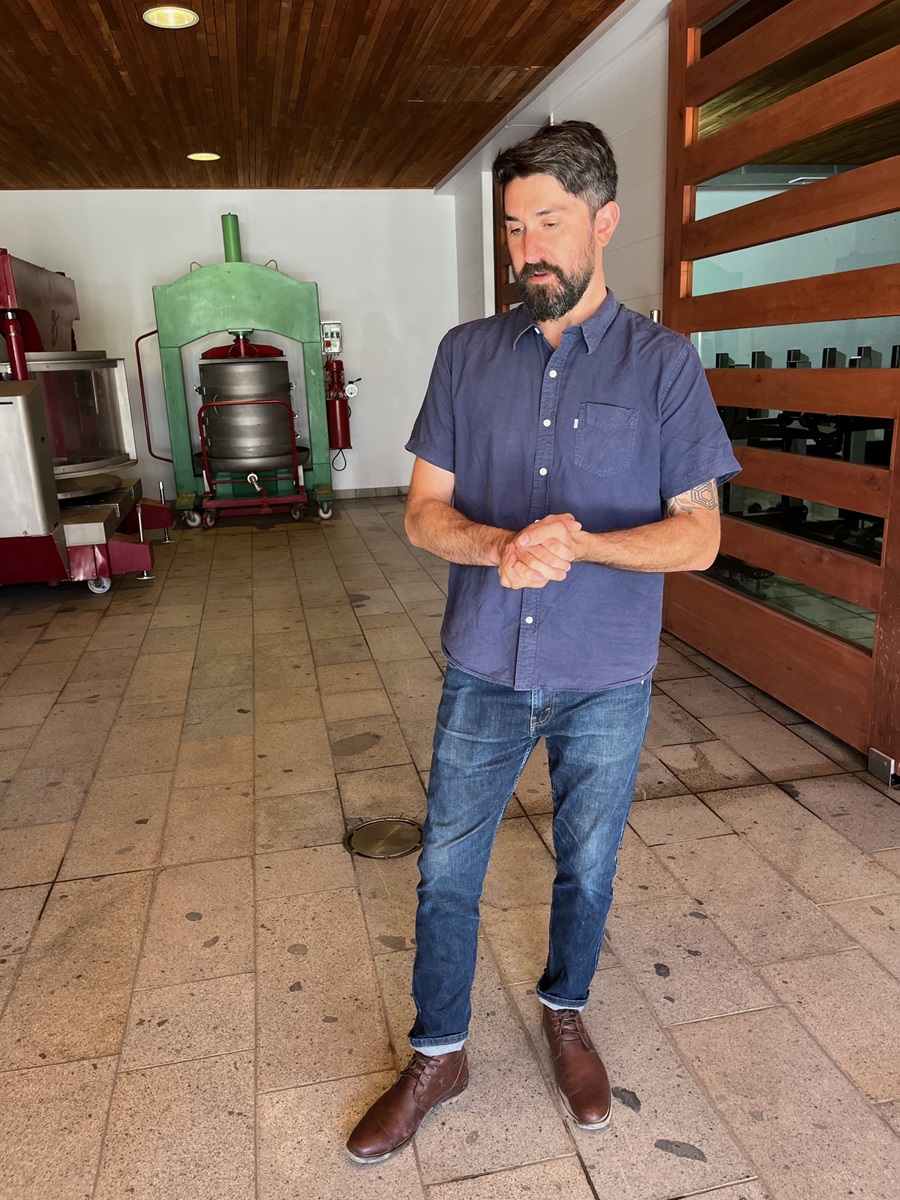
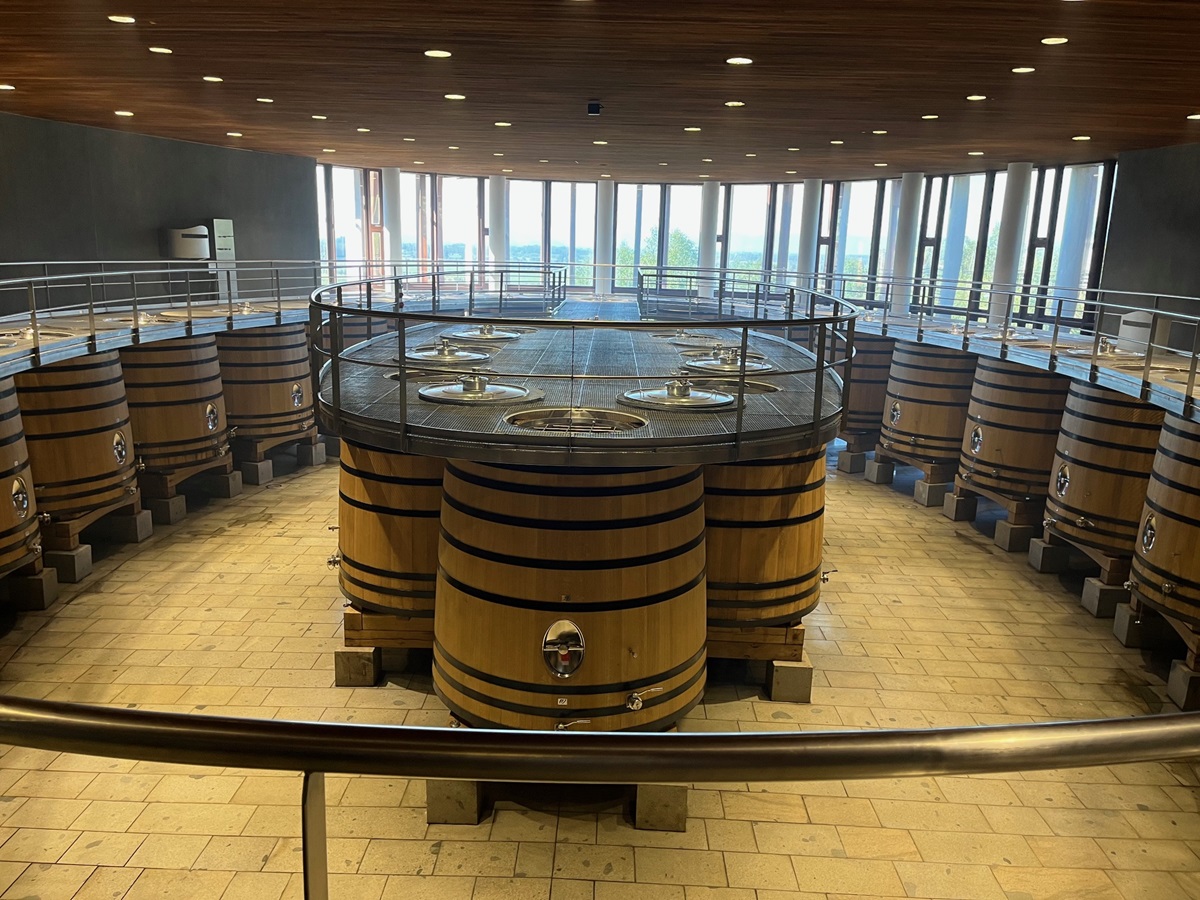
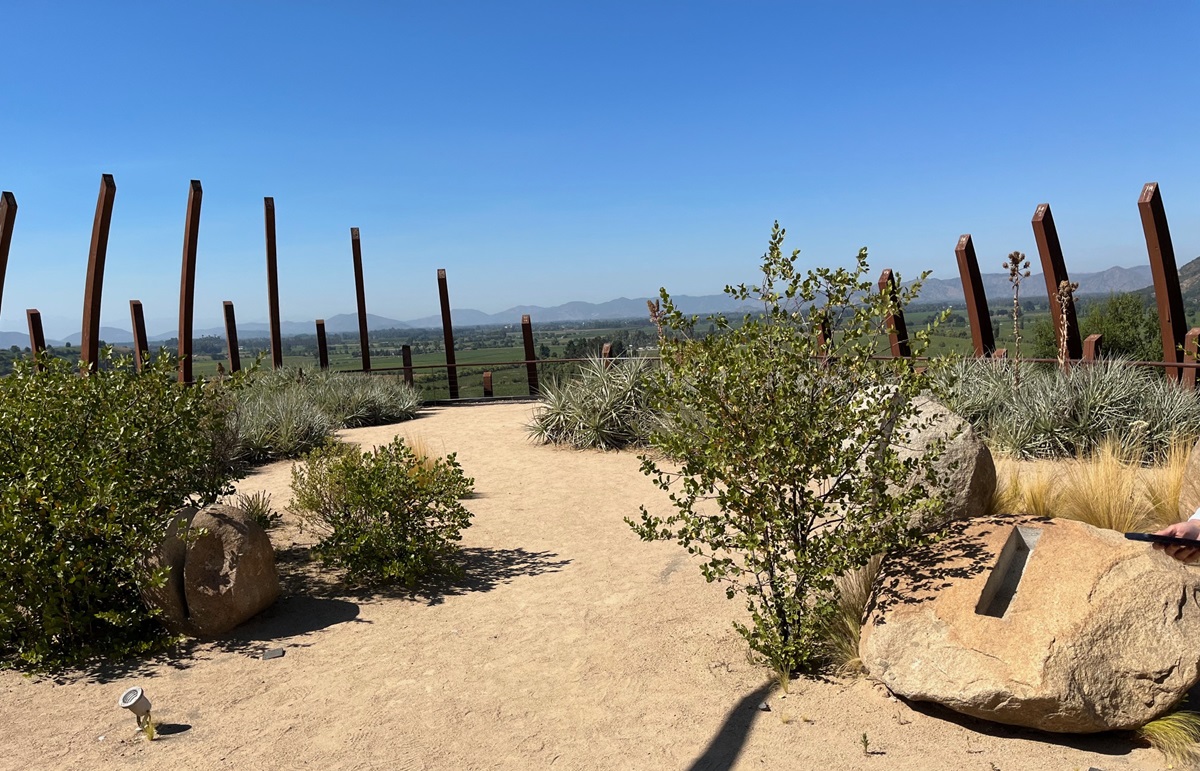
“Carmenere needs hardwork in the vineyard and careful extraction in the winery”, confirmed winemaker Daniel Postiglione at Clos Apalta (pictured above).
Postiglione reckons the key is that Carmenere needs 15 extra days extraction in tank, compared to Merlot, to build up mouthfeel and soft approachable textured tannins.
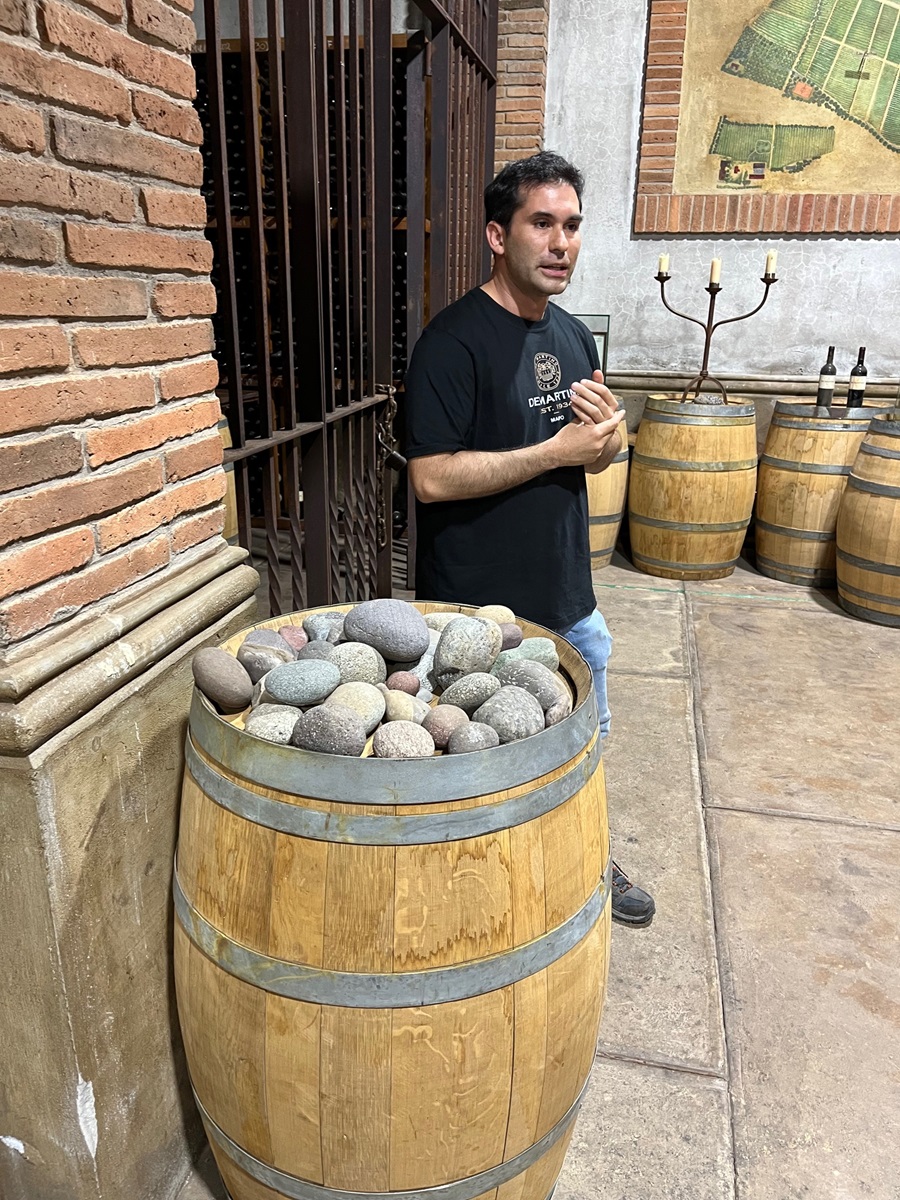
De Martino’s winemaker Nico Perez (pictured above) believes one of the problems is that producers often use excessive new oak to cover green flavours.
“Subtlety is the key for good Carmenere”, says Perez. At De Martino they allow the grape’s fruit to shine using large format neutral 5000 litre oak barrels for maturation.
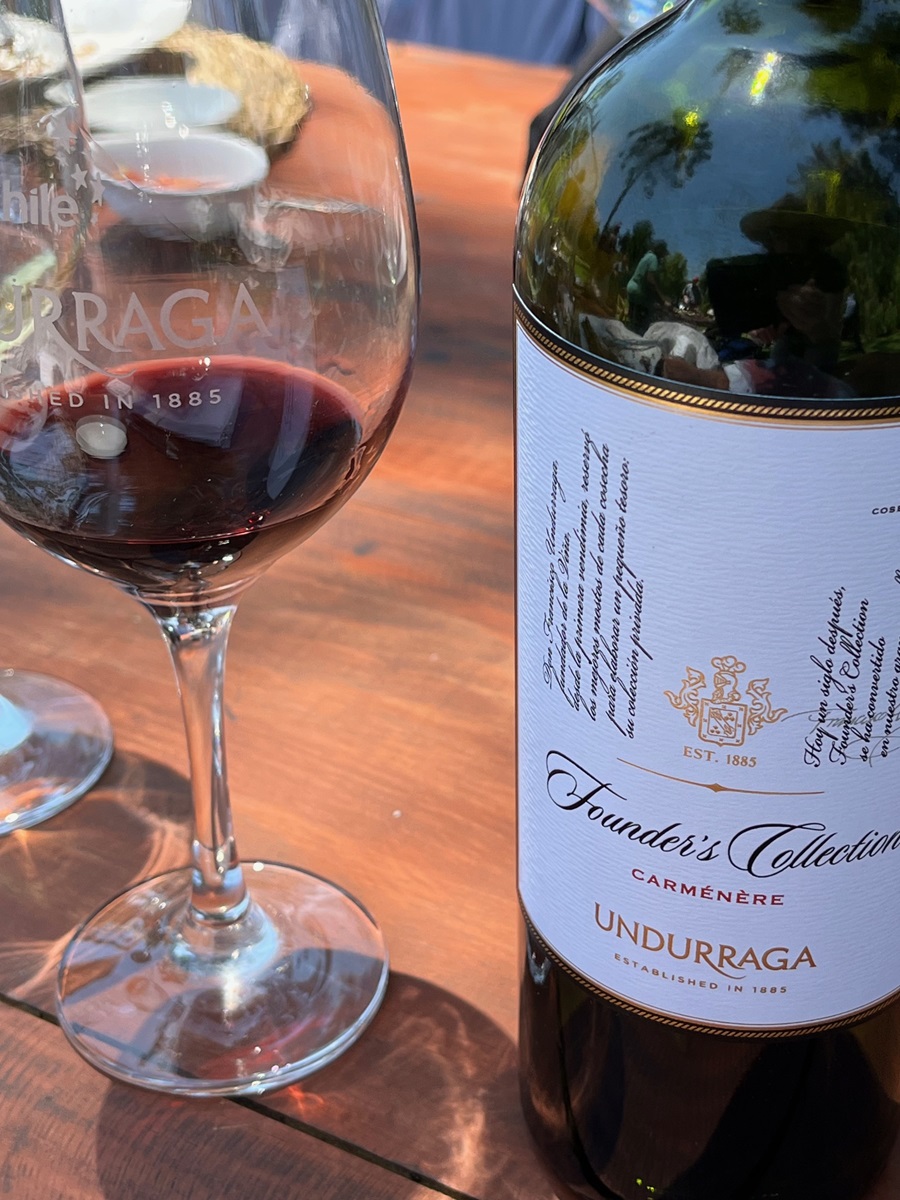
Making Carmenere seems to be trial and error, but after thirty years we are starting to see more elegant and attractive examples of this grape as a single varietal wine.
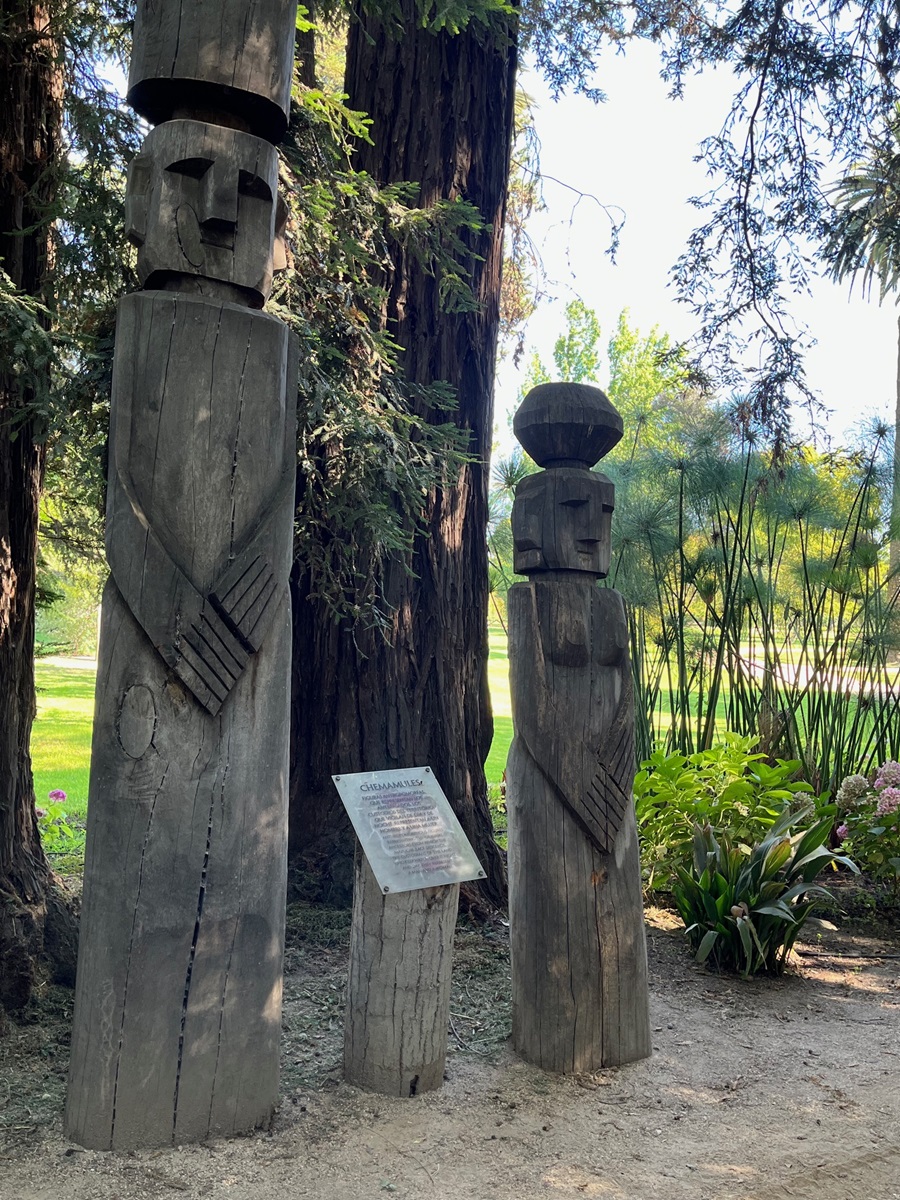
Cachapoal: VINA UNDURRAGA ‘TH’ CARMENERE 2021
£20 Strictly Wine
Peumo in western Cachapoal close to the Pacific makes elegant Carmenere on red clay soils; good introduction to the grape with cherry and chocolate notes and delightfully soft smooth texture (pictured above is in Undurraga’s beautiful winery garden).
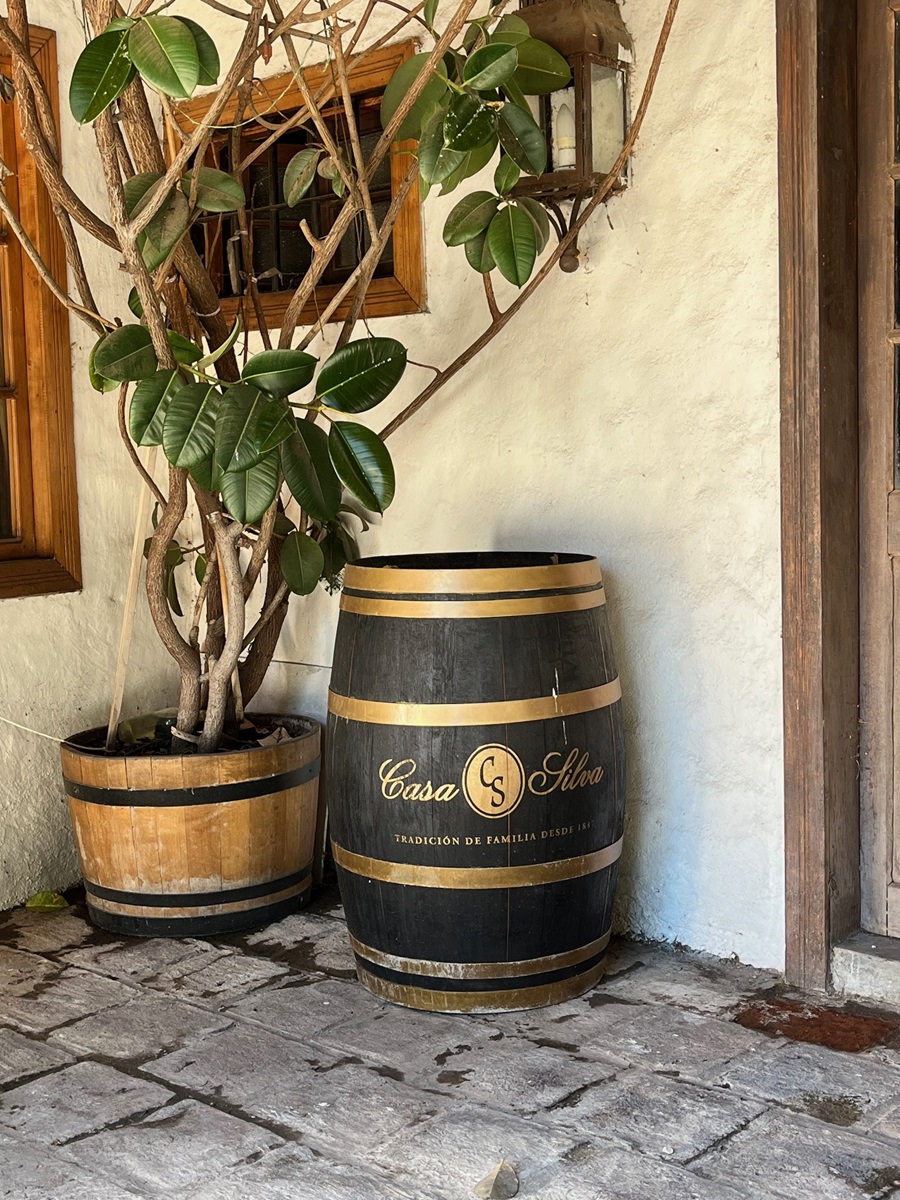
Colchagua: CASA SILVA ‘LOS LINGUES’ CARMENERE 2022
£15.99 De Burgh Wines
From Carmenere specialists who plant in Los Lingues up to 800m; rich powerful sweetly fruited example with spicy blackberry flavours, hints of balsamic with peppery twist to finish.
Colchagua: MATETIC ‘CORRALILLO’ CARMENERE 2020
£20-£22 L’Art du Vin; Cork & Cask
From sheltered vineyards in Apalta, this is intensely fruity, with spicy undertones and smoky oak notes (18 months in French oak); freshened with a touch of San Antonio Syrah in the blend.
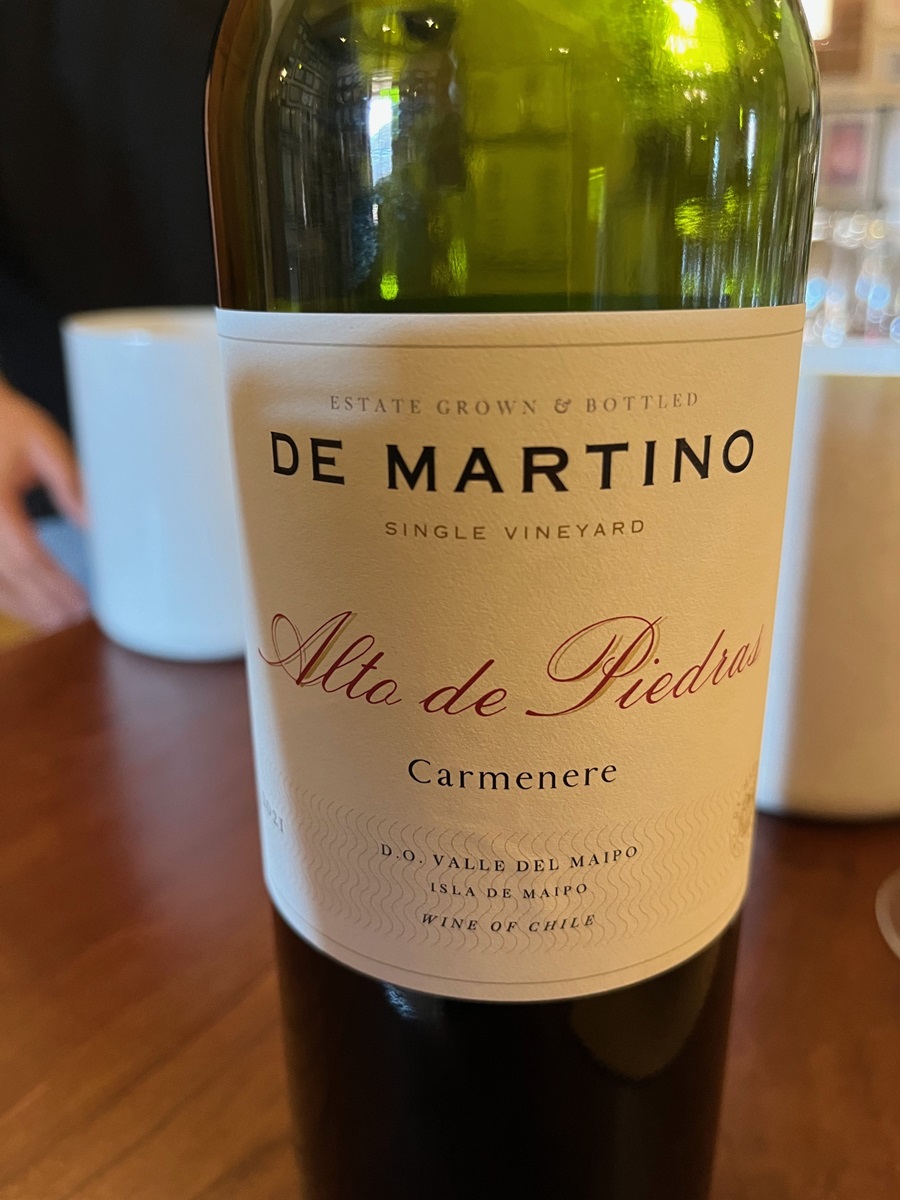
Maipo: DE MARTINO ‘ALTO DE PIEDRAS’ SINGLE VINEYARD CARMENERE 2021 ***STAR BUY***
£27 Virgin Wines; The Wine Society
Our joint top scorer in the tasting from the best 2 hectares of De Martino’s 40 hectare Carmenere plantings; this is a unique Carmenere for Chile as it has been aged only in large neutral oak. Loved its elegance and depth, hints of balsamic and soft velvet smooth tannins.
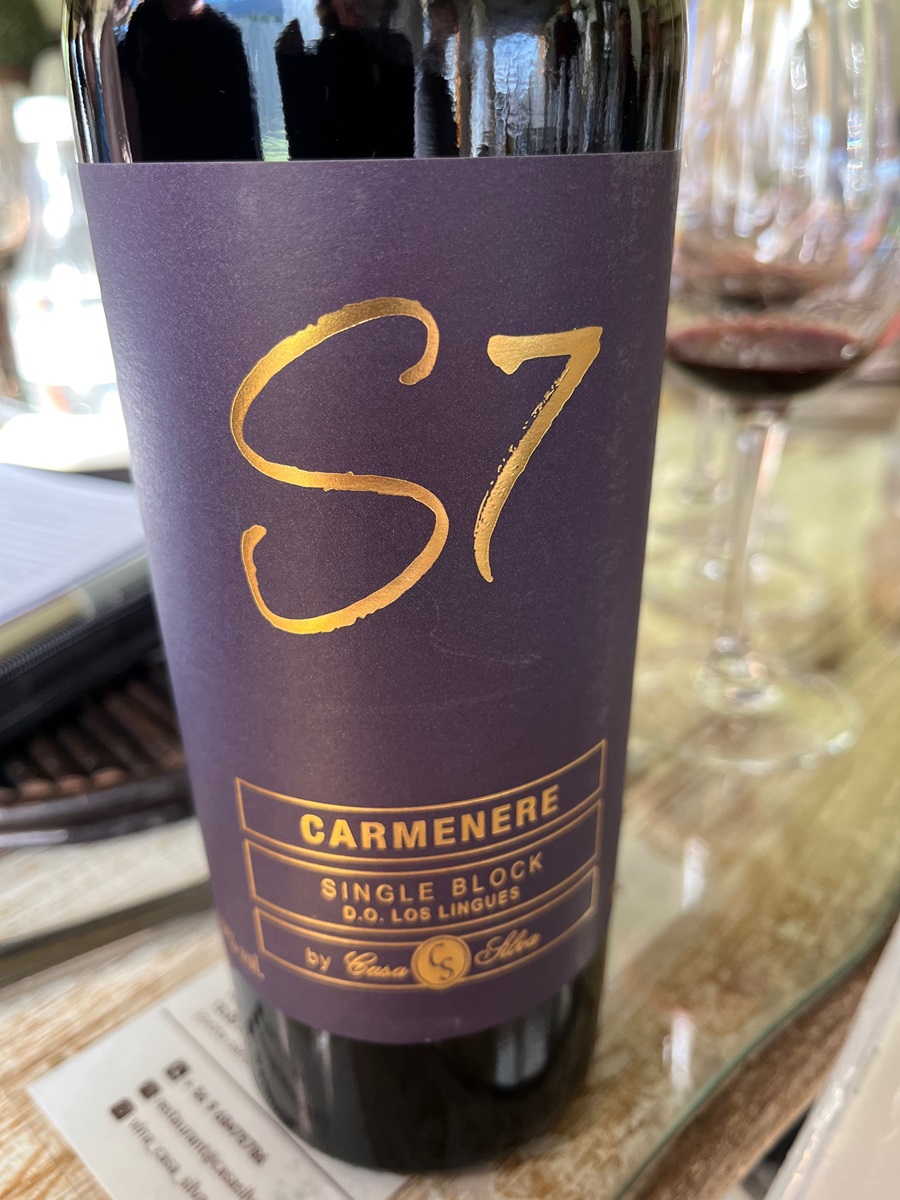
Colchagua: CASA SILVA ‘S7’ CARMENERE 2022
£27.50 Field & Fawcett; Sandhams Wine; Stainton Wine
Deep dark intense plummy fruit, silky soft tannins, sweet new oak notes with bitter-sweet finish, from the best single block of Carmenere in Los Lingues in the Andes foothills.
Colchagua: LAPOSTOLLE ‘CUVEE ALEX’ CARMENERE 2022
£27.50 www.lapostollewines.co.uk
Beautifully ripe fruit with textured tannins and silky mouthfeel showing the quality of sheltered Apalta vineyards for Carmenere; Lapostolle use longer extraction to enhance textures and add 3% Merlot to soften.
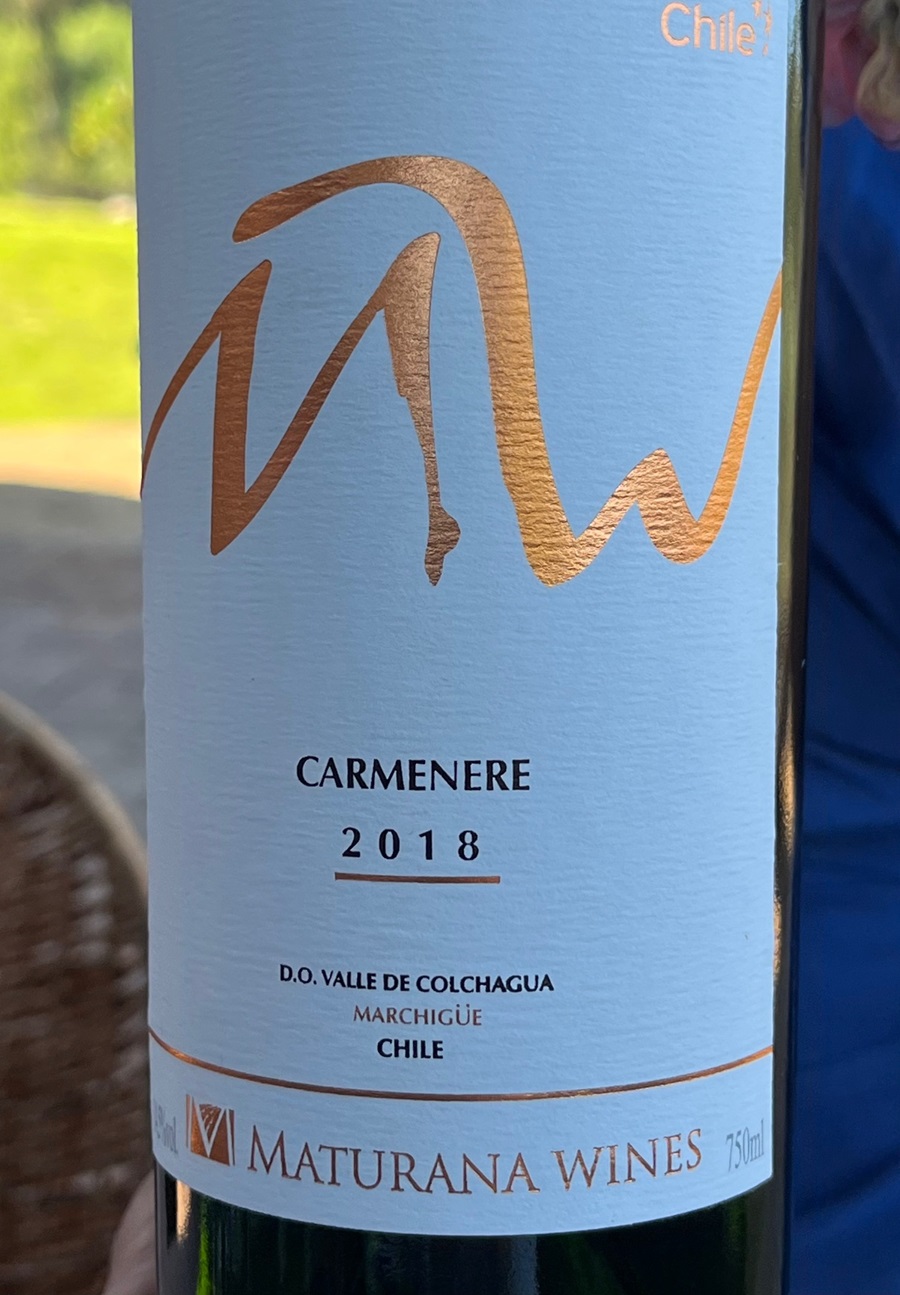
Colchagua: MATURANA WINES ‘MW’ CARMENERE 2018 ***STAR BUY***
Soon available in UK at Corney & Barrow
Superb example of Carmenere grown in Marchigue, western Colchagua, made by super-star winemaker Jose Ignacio Maturana. Loved its depth of dark fruit, peppery, black chocolate and savoury notes; one of the best Chilean Carmeneres I tasted.
Join Rose’s Escorted Wine & Culture Tour to Sicily in Spring 2025 www.rosemurraybrown.com
wine tastings
The perfect gift for the wine enthusiast in the family. Rose does In-person tastings too.
cellar advice
Rose does cellar valuations for private clients, valuations for insurers & bespoke portfolio management.
Related stories
March 31, 2024
By Rose Murray Brown MW Published in The Scotsman 30 March 2024 On 2 February 1659, the first wine made from grapes grown in South Africa was crafted by the Governor of the Cape, Jan van Riebeeck. He had planted vines four years earlier in the Company’s Garden near Cape Town from cuttings imported from France. Van Riebeeck’s first
March 23, 2024
By Rose Murray Brown MW Published in The Scotsman 9 March 2024 I have two glasses of Malbec in my hands from the same high-altitude vineyard in Uco valley in Argentina. I am in the Catena Institute of Wine in Mendoza with winemaker Agustin Silva. He has asked me to taste the two wines, both from the 1500m high
March 3, 2024
By Rose Murray Brown MW Published in The Scotsman 2 March 2024 I am standing in a vineyard planted with Arneis, Nebbiolo, Dolcetto and Barbera. They might all be Italian grapes, but I am a very long way from their homeland in Piedmont. I am at Bodega Pablo Fallabrino, a small family estate in the cool coastal


